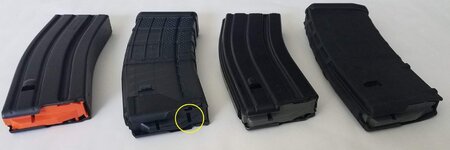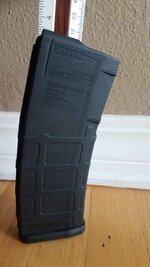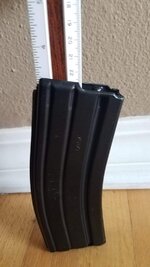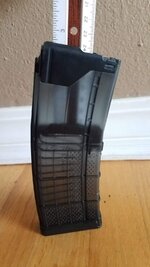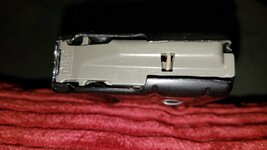- Messages
- 379
- Reactions
- 762
During the ammo experiment the other day, I also took the opportunity to function test several types of factory-style AR mags in my trove. Each mag was loaded with 25 rounds of 55 grain Fiocchi 223 for this trial.
Except for the Lancer mag, the rifle performed normally, ejecting the empty cartridges at between 4 and 5 o'clock out at least 10 feet. The empty shells from the Lancer mag discharged at between 1 and 2 o'clock, and landed about 5 feet away, simulating an overgassed condition. The empty casings flew out of the non-Lancer mags like a stick flipping in the air when playing catch with your dog. The Lancer exit and velocities replicated an underhand softball pitch.
Same rifle. Same ammo. Anyone know why the Lancer performed like it did? Not bashing the mag, just curious if anyone knows the potential cause. The only difference I see is the extra hole on the Lancer's anti-tilt follower.
Thanks.


- PMag Gen2
- D&H (aluminum) from Palmetto
- Lancer (dark smoke color in case anyone was wondering)
- C Products (stainless steel)
Except for the Lancer mag, the rifle performed normally, ejecting the empty cartridges at between 4 and 5 o'clock out at least 10 feet. The empty shells from the Lancer mag discharged at between 1 and 2 o'clock, and landed about 5 feet away, simulating an overgassed condition. The empty casings flew out of the non-Lancer mags like a stick flipping in the air when playing catch with your dog. The Lancer exit and velocities replicated an underhand softball pitch.
Same rifle. Same ammo. Anyone know why the Lancer performed like it did? Not bashing the mag, just curious if anyone knows the potential cause. The only difference I see is the extra hole on the Lancer's anti-tilt follower.
Thanks.

